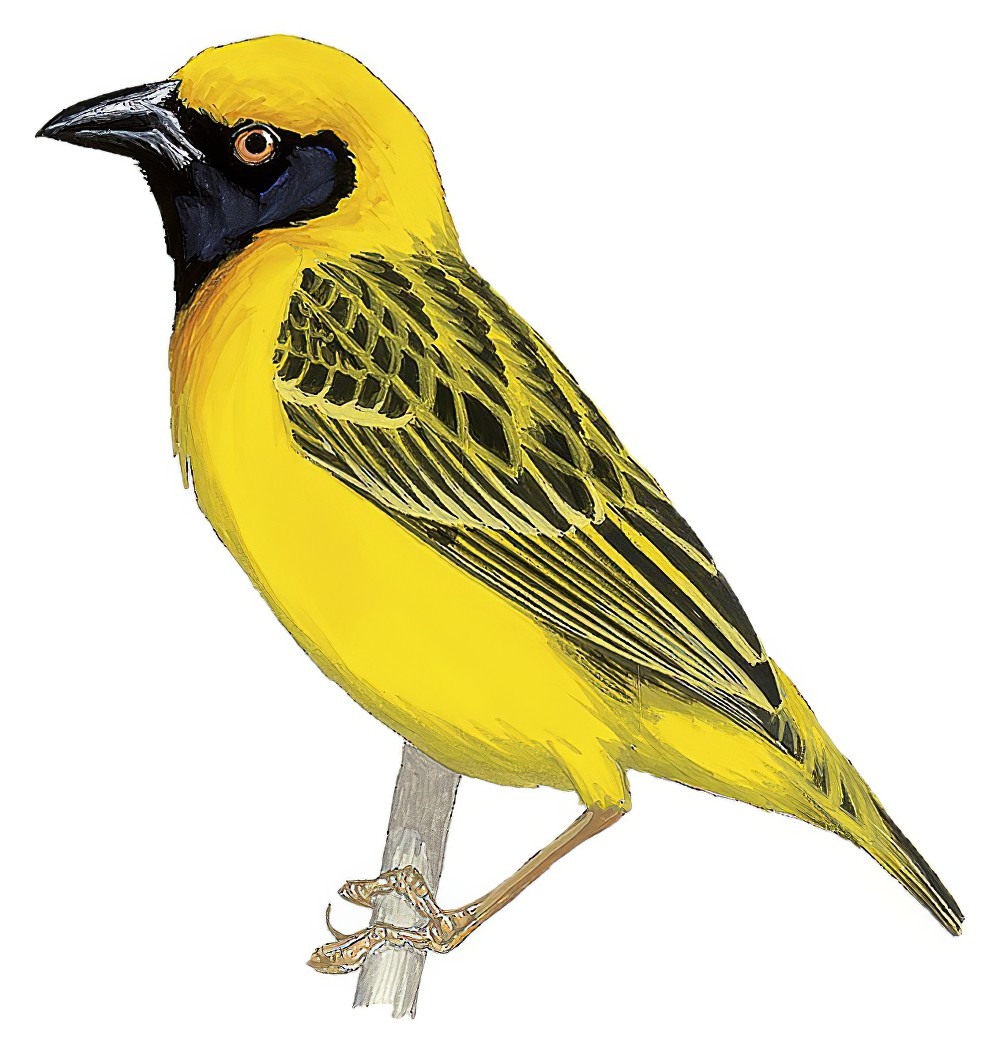Fox’s Weaver / Ploceus spekeoides

Fox's Weaver
SCI Name:
Protonym: Ploceus spekeoides Bull.Br.Orn.Club 68 p.7
Taxonomy: Passeriformes / Ploceidae / Ploceus
Taxonomy Code: foxwea1
Type Locality: Ngariam, Teso, Uganda.
Author: Grant & Mackworth-Praed
Publish Year: 1947
IUCN Status: Near Threatened
DEFINITIONS
PLOCEUS
(Ploceidae; Ϯ Baya Weaver P. philippinus) Gr. πλοκευς plokeus weaver < πλεκω plekō to plait, to entwine; "LES TISSERINS. (PLOCEUS. Cuv.) (2). A bec assez grand pour les avoir fait en partie classer parmi les cassiques; mais sa commissure droite les en distingue. Ils ont de plus la mandibule supérieure légèrement bombée. On en trouve dans les deux continens. La plupart de ceux de l'ancien font leur nid avec beaucoup d'art, en entrelaçant des brins d'herbes, ce qui les a fait nommer TISSERINS. Tel est le Toucnam-Courvi des Philippines. (Loxia Philippina. Lin.) Enl. 135. Jaune tacheté de brun, à gorge noire. Son nid, suspendu, est en forme de boule, avec un canal vertical, et ouvert en dessous, qui communique par le côté dans la cavité où sont les petits (1). Quelques-uns rapprochent leurs nids en grande quantité, pour en former un seule masse à plusieurs compartimens. Tel est le Républicain. (Loxia socia. Lath.) Paterson. Voy. pl. 19. ... (2) Πλοκευς, tisserand. ... (1) Ajoutez le capmore, Buff. (Oriolus textor, Gm.), enl. 375 et 376. — Fringilla erythrocephala, enl. 665. — Le prétendu tangara de malimbe, Daud. An. Mus. I, p. 148, pl. x. — Le baglafecht. (Lox. Abyssinica.) — Le nélicourvi (lox. pensilis), Sonn., 2e Voy. pl. 109." (Cuvier 1817); "Ploceus Cuvier, 1817, Règne Anim., 1, p. 383. Type, by subsequent designation, Loxia philippina Linnaeus (Gray, 1840, List Gen. Birds, p. 42)." (Moreau in Peters 1962, XV, 32). Recent work indicates that the African and Malagasy members of this genus should be included in Malimbus.
Var. Ploceys.
Synon. Bensonhyphantes, Cinnamopteryx, Deignaniplectes, Deleplectes, Dendrhyphantes, Eremiphantes, Eremiplectes, Euploceus, Eupodes, Heterhyphantes, Hypermegethes, Hyphantornis, Hyphanturgus, Hypositagra, Icteropsis, Melanhyphantes, Melanoploceus, Melanopteryx, Microplectes, Microploceus, Nelicurvius, Notiospiza, Oriolinops, Oriolinus, Othyphantes, Pachyphantes, Phormoplectes, Plesiositagra, Ploceella, Ploceolus, Rhinoploceus, Saka, Sharpia, Sitagra, Sitagroides, Sycobrotus, Symplectes, Textor, Thomasophantes, Xanthophilus, Xanthoplectes, Xanthoploceus.
spekeoides
Specific name Hyphantornis spekei Heuglin, 1861; Gr. -οιδης -oidēs resembling; "PLOCEUS SPEKEOIDES, new species. Description.—The adult male is similar to Ploceus spekei (Heuglin) but has a shorter wing and a shorter tail. The adult female differs from the female of P. spekei in being below wholly yellow, lower rump and upper tail-coverts yellow; malar stripe blackish, bill black. ... Although P. spekei is not known to occur in Uganda, the distinctions above indicated are too great to admit of this bird being a race of it, and indicate at least specific rank. Owing, however, to its very great resemblance to that species we have thought it best to call it by the above name." (C. Grant & Mackworth-Praed 1947) (Ploceus).
UPPERCASE: current genus
Uppercase first letter: generic synonym
● and ● See: generic homonyms
lowercase: species and subspecies
●: early names, variants, mispellings
‡: extinct
†: type species
Gr.: ancient Greek
L.: Latin
<: derived from
syn: synonym of
/: separates historical and modern geographic names
ex: based on
TL: type locality
OD: original diagnosis (genus) or original description (species)












